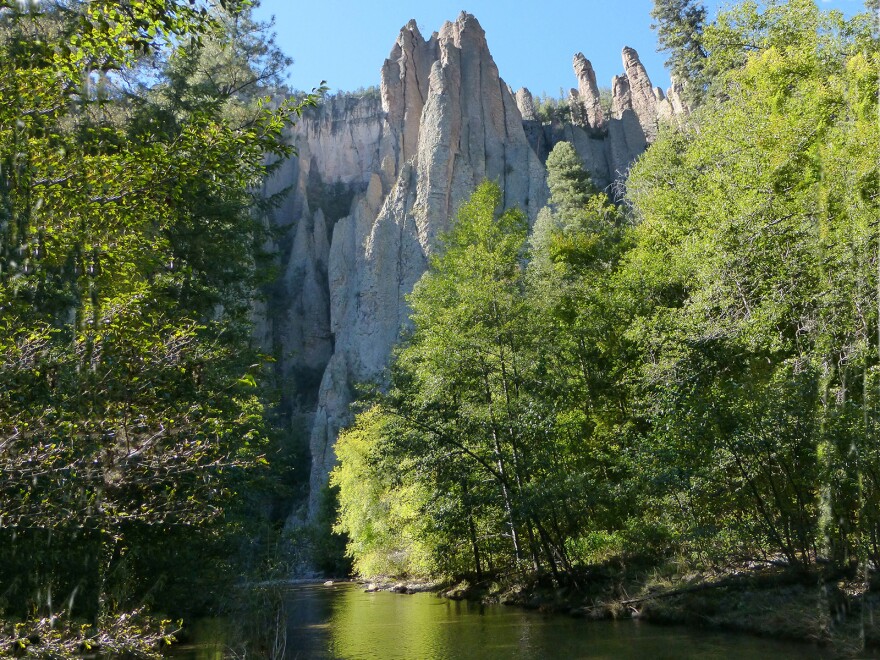The Biden Administration has already recognized some new national landmarks in our region. It’s part of the America The Beautiful plan launched in May 2021 to protect 30% of lands and waters by 2030.
But some advocates from the Latino community want protections for more sites that are important to them and other underrepresented groups. The Hispanic Access Foundation has created a list of sites that it would like the Biden administration to consider.
“This is a list of places that have cultural, historical or just recreational ties to the Latino community all across the U.S.,” said Shanna Edberg, director of conservation programs at the foundation. The sites “are facing these dangers of degradation and are located close to Latino communities who are very nature-deprived.
“We want to make sure that it includes provisions that make sure that these benefits do reach our communities.”
Currently, less than 8% of landmarks represent the stories of underrepresented groups, like Latino and Indigenous communities, according to an analysis by the National Historic Landmarks Committee. Many of the sites on its list reflect Latino history, which is often overlooked, according to Edberg.
“By protecting these places, by putting up trails and signage in all the languages that users will come in, we can share these histories and tell the stories that have such an important part of American identity,” Edberg said.
Additionally, underrepresented communities face what the foundation calls a “nature gap.” A report published in 2020 by the foundation and the Center for American Progress found that the United States has fewer forests, waters and other natural places near the homes of Black, Latino and Asian communities. Families of color with children also have less access to nature than the rest of the nation.
“They are more nature-deprived than white communities,” Edberg said “Since then, we've been really taking up that nature gap and trying to address it. And one way to address that, obviously, is by protecting new areas of lands, water and ocean to make sure that places nearby our communities are protected and are not in the process of being destroyed or degraded by development, by oil and gas production and things like that.”
At the top of the foundation’s list is Avi Kwa Ame, a part of the Mojave Desert near Searchlight, Nevada. It’s sacred to 10 Yuman speaking tribes, has one of the largest Joshua Tree forests, and is full of natural diversity, including species such as the Desert Tortoise. President Biden has pledged his support of a monument there, but no proclamation has been made yet.
“It's really important to the large and growing Latino community in Nevada,” Edberg said, “as well as the cultural and historical overlap that our Latino communities have with the Native Americans who have considered the land sacred and have occupied it and stewarded it for tens of thousands of years.”
Also on the list is the Gila River in New Mexico, a tributary of the Colorado River. It’s a major water source for Latino farmers and a home for many endangered species.
“Protecting this place as a wild and scenic river would really promote the health of the river, which so much of our economies and Latino communities, farmworker communities depend on,” Edberg said.
Regardless of what happens with the sites, Edberg said they want to see more trees and greenery in the streets so these communities have increased access to nature.
“We need nature and all the benefits that it provides in every aspect of our lives and these parks would just be one piece of it,'' Edberg said. “Nature is really incredible in the physical and mental health benefits that it brings, as well as economic opportunities, outdoor recreation, businesses that are formed from folks who have access to nature.”
More sites on the list were in California, Arizona and Texas. To read more about them, visit Hispanic Access Foundation’s website.
This story was produced by the Mountain West News Bureau, a collaboration between Wyoming Public Media, Nevada Public Radio, Boise State Public Radio in Idaho, KUNR in Nevada, the O'Connor Center for the Rocky Mountain West in Montana, KUNC in Colorado, KUNM in New Mexico, with support from affiliate stations across the region. Funding for the Mountain West News Bureau is provided in part by the Corporation for Public Broadcasting.
Copyright 2022 KUNC. To see more, visit KUNC. 9(MDAyMjQ1NzYwMDEyMjU5MjA0MjE0Yzg1Mg004))







